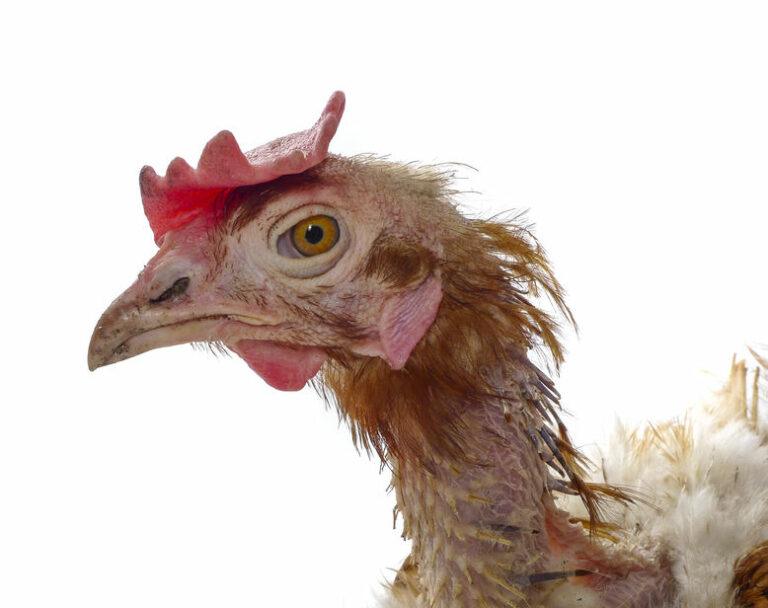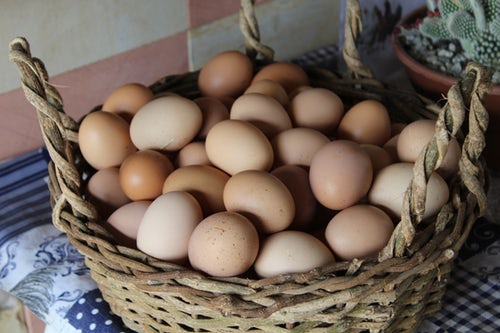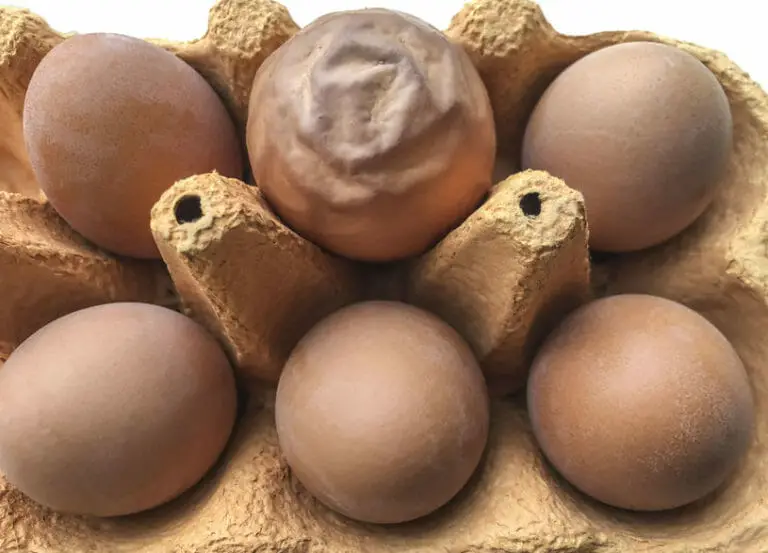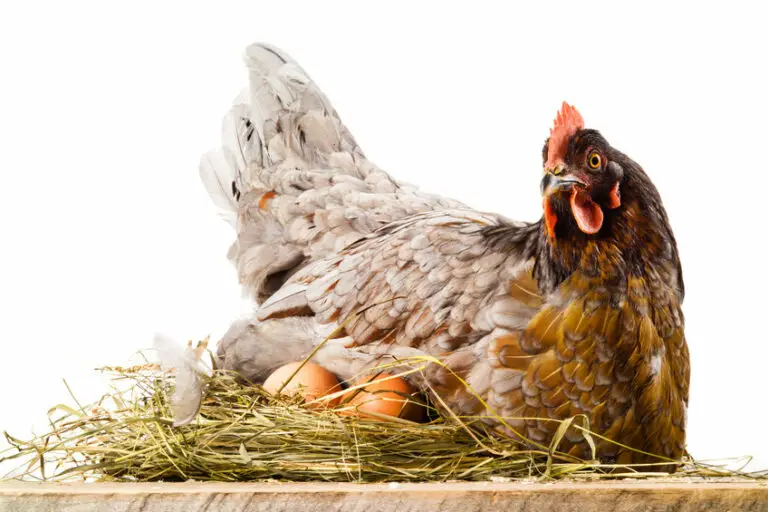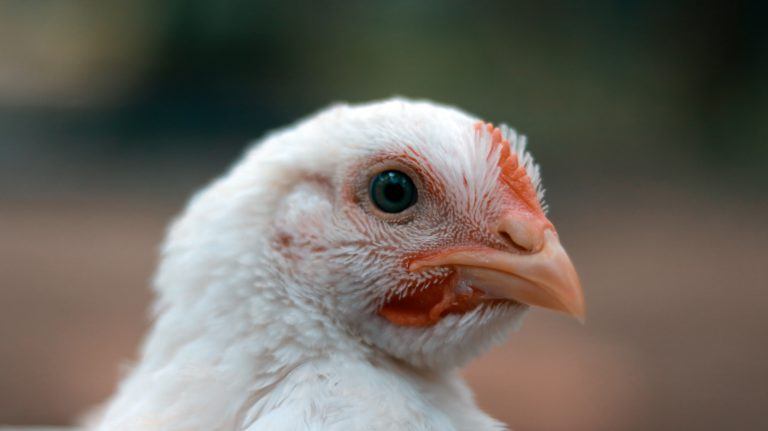How Many Chickens Should I Get? It Depends
If you’ve decided to take the plunge and buy a few feathered friends, I congratulate you! Raising chickens is fun and will not break the bank if you’re raising a few for eggs, meat, or both.
According to Wikipedia, “Farmers raise more than 50 billion chickens annually as a source of food, both for their meat and for their eggs.” Now that’s a lot of chickens!
But just how many chickens should I get, you ask? That depends on a few factors like where you live (town or country), if you want to raise them for eggs or meat (or both), and if you plan to sell chicks, eggs, or meat. We’ll take a look at some of these factors in this article to help you make some final decisions.
A Few Basics About Chickens
- They are Social – even if you don’t plan to get very many chickens, always plan on getting more than 1. They are social birds and do not do well on their own.
- They need around 3-4 square feet (ft) of space per chicken in the COOP and about 10 sf per chicken in the RUN. If you can provide more than that, do it! Chickens love foraging, scratching, and picking and the more room they have to do that the better.
- They cannot survive by free ranging alone…they’ll need feed. It’d be great if they could survive off grass, seeds, bugs, worms and other natural items from the earth. However, it takes roughly 1 acre per chicken to accomplish this! So for most of us, buying chicken feed is a must.

How Much Do They Eat?
As we just mentioned, chickens need to eat feed which can be bought at the farm store or online. As a general guide, figure that they’ll eat about 1/4 pound per chicken per day.
Feed often comes in 40 lb or 50 lb bags at around $14.00/bag…just “food” for thought to give you a concept of how much it will cost to keep chickens in your yard each month.
More on selecting the right chicken feed can be found here!
Do You Plan To Free Range Or Keep Them In A Coop Or Run?
If you are planning to free range them in your yard, they will be very happy and it’ll be easy to accommodate a larger number of chickens…but be prepared to clip their wings so they don’t fly over to your neighbors! Chickens can get by in a smaller coop area at night if they are free ranging in the yard all day…something to keep in mind!
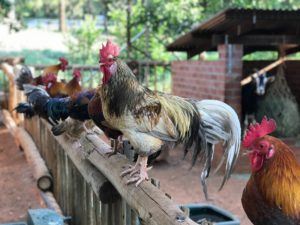
In a “run” they are contained but, unless you have a large run, you will not be able to have as many chickens since you need to estimate 10 sf per chicken which can take up a lot of space if you have a smaller yard.
If you have a small back yard, you may not be thinking of getting more than 4 or 5 chickens anyway, so a coop with a run that can be moved once in awhile will work great.
If you have more acreage (like 1/2 acre on up), you can house a lot of chickens comfortably, either letting them free range or be in a coop and run. However, you also need to be aware that predators are more likely in the country so having a trusty coop to house your birds at night is essential.
Read on to learn more about other factors to consider when determining how many chickens to get.
Do you Want Eggs, Meat, Or Both?
There is no wrong way to raise chickens. It will really depend on your personal preferences. Many people view their chickens in strictly utilitarian ways…for meat and eggs. Others of you look at your chickens as pets and prefer to simply have chickens to raise a few eggs. Either way is fine!
Raising Chickens For Eggs
The most common (and fun) reason for raising chickens is for those yummy eggs! But you’ll have to consider just how many eggs you’ll be wanting.
Keep in mind that the average hen (of any breed) lays between 200 – 300 (or more) eggs per year. So get an idea of just how many eggs you eat or use for baking in a given day, week, or month.

The recommended average to consider is 2 or 3 hens per family member. If you do a lot of baking, you may want to get more. Again – it’s just an estimate.
If you’ve never raised chickens before, you could start by getting just 2 chickens to “get your feet wet.” Then just supplement with a few eggs from the store, if needed, until you get a sense of just how many chickens you may want to raise in the future.
If you love it (which many people do)Then you could just purchase a few more hens that are already laying or simply raise some chicks. (More on where to purchase chicks in a bit).
What we have noticed over our 15 years of raising hens, is that even if we get more eggs than we can eat – it’s easy to give or sell them to friends or family! Our thoughts on numbers of hens to buy is “the more the merrier,” because it’s easy to catch the chicken raising bug and buy more chickens than you really need. Hey it happens!
Read here for more information on raising chickens for eggs.
Raising Chickens For Meat
Many people love raising their own chickens for meat. The beauty of this is that you’ll always know where the meat comes from and how it was raised. It takes some work to raise your meat chickens, and then process them. But there is a wealth of information on how to do this on YouTube and other places on the web!
If you plan to raise chickens for meat, you’ll likely want to get more chickens and butcher them all at once. You can process them yourselves or check with your local butcher shop on how much it would cost to have it done there.
Just keep in mind that these costs can start to add up! Many farmer don’t mind doing the work themselves while others don’t mind paying the extra money for someone else to process the birds as it saves them the time and hassle of doing it.
Not only that, it’s easy to get attached to your chickens so butchering them may be very difficult for people. So having the butcher shop do it may be just the ticket if this describes you!
But HOW MANY meat chickens per family? You’ll have to estimate just how much chicken your family eats per week or month and then estimate about how many chickens it will take to you feed your family per year.
You’ll also have to look at how much freezer space you have and if you want to add an extra freezer for this additional meat. The number of chickens families process per year varies widely. Some families rely on chicken for several meals per week and buy about 50 or more meat chickens per year to put in the freezer. Others just want to process a few to cook during the holidays.
We have a large family and could easily devour 50 or more per year. You’ll have to determine what works best for your situation. As with anything, a lot of this process involves trial and error.
Should You Buy Chicks Or Chickens?
We’ll start off here by saying neither way is right or wrong. It just depends on your how much effort you want to exert to get to the final product of eggs, meat, or both. Read on…
Chicks
They’re fluffy and cute and don’t eat much at first…but it takes time and money to raise them to adult size. You’ll have to figure in brooder costs (the area in which chicks are grown), feed costs, equipment costs, electricity costs (for running a brooder light 24/7).
It takes about 4-6 months before they are considered adults, have all their feathers, and start laying eggs. Some meat chickens can actually be processed in 3 months!
Chickens
If you don’t want the added work associated with chicks, buying 6 month to 1 1/2 year old adult chickens is a great way to go as well. It’s not as popular because people love picking out chicks and then raising them at home…I can relate.
But chicks can get sick and die when they’re tiny. And if you buy them a bit older, all the work of feeding and raising them is done and you can benefit from a product that is ready to go!
Expect to pay more for chickens if you buy them as adults as the seller is likely wanting to get back some of the expense of raising them as chicks.
Another word of caution…be wary of buying chickens at auctions as you may be getting chickens way past their prime or those that are sick. If you buy chickens from a local farmer, you’ll get a much better idea of how they were raised and know they are healthy and ready to work at your home!
Should I Get A Rooster?
Some chicken farmers want to raise their own chicks. We’ve done this and it’s a lot of fun! In order to do this, of course, you’ll need a rooster. But just know that roosters can be a bit mean sometimes.
Reports of roosters attacking people is not all that uncommon. In fact, we had a rooster that attacked one of our children a few years ago and caused some serious cuts to her face from those large talons…we quickly dispatched that sucker and have not had a rooster since. Most of the time this is not an issue, but it’s worth noting that they CAN be unpredictable.
But if you find a rooster with a mellow disposition, it can work out just fine. Watching a hen appear with a large brood of chicks next to her is an incredible site! You can either keep those chicks or sell them to others via Craigslist or via social media sites.
If you plan to breed chickens, plan on one rooster for every 10 hens. Once the rooster has done it’s job, you can continue using it for breeding purposes or process it as meat.
What Breeds Of Chickens Should I Get?
This will depend on what you plan to use them for…
Egg Producing Chickens
There are dozens, if not hundreds of egg producing breeds! I recommend that you simply check out your local farm store as you can ask a lot of questions from the knowledgeable on what breeds to pick etc. Plus, you can often see pictures of what they’ll look like as adults and buy the chicks right there at the store, along with whatever supplies are needed.
However, it’s becoming more and more common now to buy fertilized chicken eggs online! It didn’t seem plausible to me when I first heard of this but we have had much success ordering chicks online from hatcheries all over the country! What’s nice about ordering online is you can pick out breeds which may not be available at your local farm store.
We’ve covered this topic in-depth here, but will list a few of the top laying egg breeds below.

- Leghorns – they are a bit flight but are incredible egg layers! We always have a few in our flock as they lay around 300 eggs/year or more! Their eggs are white.
- Rhode Island Reds – Another prolific laying breed. They have a beautiful dark red color and lay around 275 – 300 eggs/year. Their eggs are brown
- Easter Egger – These are super fun as they lay green, blue, or speckled eggs! It’s fun gathering these eggs in the coop. Plus, they lay great numbers of them and have a nice docile disposition.
- Buff Orpington – “Buffs” as we call them, are one of the most docile breeds and the kids can always pet them. They may not lay as many eggs as some of the other breeds, but you can plan on around 250/year or so. They lay brown eggs.
- Sex Links – These cross bred chickens are prolific layers and it’s smart to have a few of these in your flock! They lay brown eggs.
- Plymouth Rock – These hens are larger framed chickens and lay large brown eggs.
- Marans – Another beautiful hen with a gentle disposition. Their eggs are a nice dark brown with speckles. My kids love them!
The above list is from a few of the more common breeds that are more common and we’ve had great success with. For more information, we write all about the best egg laying chickens here, complete with photos and descriptions of each breed.
Meat Chickens
Unlike like their egg producing cousins, there aren’t as many meat chicken varieties to choose from. However, the breeds available are all fine meat chickens!
- Cornish Cross – A hefty, large framed chicken that can grow from chick stage to butchering size in 3 months! They are prone to leg issues because of this fast growth, and don’t have much of an ability to forage. But whether you are thinking of growing them for your family or on a larger scale basis, it’s a great breed to try.
- Red Rangers – Very similar to Cornish Cross but slightly smaller frame. They finish out a bit later than Cornish Cross but are less prone to leg problems like the Cornish Cross. They have the ability to forage a bit more than the Cornish Cross, which means its diet may be a bit more healthy.
Dual Purpose Chickens
As the name implies, dual purpose chickens can work as either egg producing or meat producing birds. Examples of these breeds include many of those that fall in the laying chickens category…
- Leghorns
- Australorps
- Rhode Island Reds
- Wyandottes
- Buff Orpingtons
Again – the above list includes more of the common dual purpose breeds, but really ANY breed can effectively be used as dual purpose chickens.
It should be noted here that if you use the above breeds for meat production, it will take up to 6 months to reach finish weight, around 2 – 3 times longer than their meat breed counterparts…however, many people feel it’s worth the wait and added feed costs because the meat is tender and less fatty than that of the Cornish Cross.
Some farmers will raise the above (or similar) dual purpose breeds for egg production and then, when egg production begins to decrease (at around age 2 -3 years old), they butcher them and get a new flock.
Something to keep in mind though…if you simply want to keep your hens as pets (dual purpose or not), they will molt at around 1 or 2 years of age. When this happens, egg production drops significantly!
However, when the molt is complete, the chickens will begin laying once again. They will not likely lay as many eggs as before the molt, but at least will provide a few. And hey – if you love them as pets, fewer eggs won’t be that big of an issue!
Where To Buy Chickens
Nowadays there are several places where you can buy your chicks or chickens! We cover more about raising chicks here!
Farm Stores
As you may have already guessed, farm stores sell baby chicks in the Spring and/or Fall. Just do a search on local farm stores and you’ll pull up a few options. You can also check for organic chicks this way.
Buying Chicks Online
As mentioned earlier, buying chicks online is becoming more popular! And for good reason, since you can pick from a larger variety of breeds. A few different breeds can be found here.
Craigslist
Buying chicks OR chickens off Craigslist can also work very well. We have done that to expand our flock and had great success. What’s great about Craigslist is that you can buy adult chickens here, which is not often an option at farm stores.
Social Media Sites
Facebook and similar sites will have local agricultural or farming groups you can join as well. It will show classified ads where people can sell poultry or other farm animals.
Regardless of where you purchase your chicks, check to see if they’ve been sexed – basically to see if they separated males from females. If you buy chicks “straight run,” they are all mixed together and you may end up with a few roosters.

Closing Thoughts
We hope you’ve found a few useful nuggets about how many chickens you are prepared to have in your yard or pasture! It’s easy to get carried away with chickens and buy more than you planned on…especially when you see them as chicks!
We’ve bought too many chickens this way in the past because those chicks were just too cute to pass up. So we bought a bunch – I mean they really don’t take up a lot of space right? That is until they grow up! I think you get the idea ?
If you have any thoughts on how many chicks or chickens to buy, leave a comment below. We’d love to hear from you! Thanks for stopping by.


